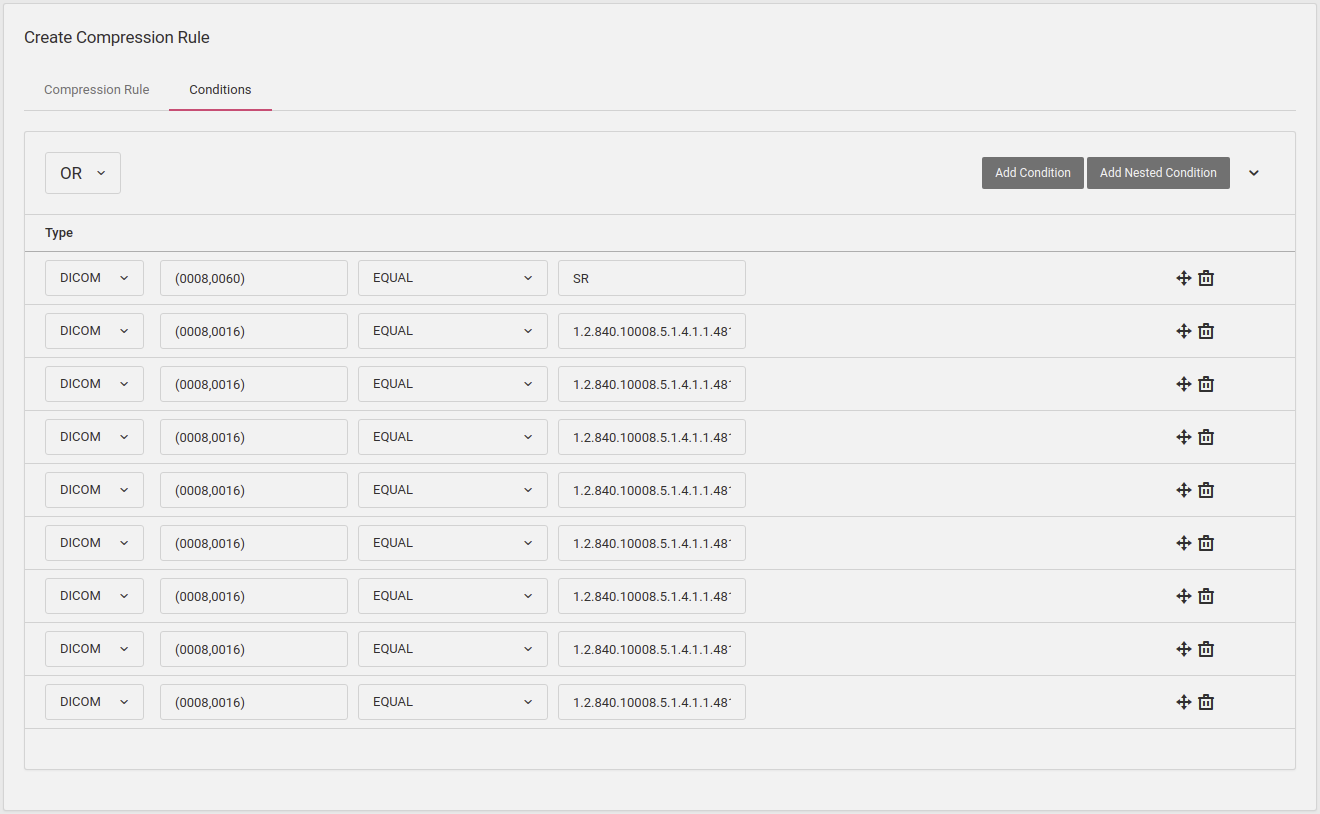Compression in DICOM is not a case of turning it on or off. To use compression effectively and safely you need to be aware of the different types of compression available as well as what forms of compression are best suited to the type of DICOM instance you are dealing with.
In most cases, a DICOM instance contains pixel data, that is the image that was acquired by the modality, as well as additional metadata such as the patient information, study information, series information, etc. This means that 99% of the size of that instance is going to be attributed to the image stored within it. In these cases, you can achieve very high lossless or lossy compression rates with the DICOM standard image compression such as JPEG, JPEG-LS or JPEG 2000. But what if you have an instance that is greater than 30MB in size that has no pixel data?
A number of SOP Classes are used to store structured data and contain no pixel data. One such example is Radiation Therapy. There are a number of SOP Classes related to this particular aspect of DICOM and for the most part, these contain only metadata. Some of these instances can be upwards of 30MB due to the contouring information stored within them. If you were to apply an image type compression to this instance, you would yield zero benefits as there is no pixel data to compress. This is where Deflated Transfer Syntaxes can help!
What is Deflated Little Endian (Explicit VR)?
Deflated Little Endian Transfer Syntax (Explicit VR) is a DICOM Transfer Syntax that uses a compression algorithm to compress the entire DICOM file, not just the pixel data.
This has great results when we need to reduce the size of DICOM instances that have no pixel data.
Why not always use Deflated Little Endian (Explicit VR) then?
While compressing the whole DICOM file works well, it does not achieve the same compression ratio as one of the other compression types could achieve. For DICOM instances that contain no pixel data, using this Transfer Syntax can yield material decreases in storage requirements and transfer times. However, for the DICOM instance that contains pixel data, it may be worth considering a Transfer Syntax that compresses the pixel data.
Of course, there are always tradeoffs between size, quality, speed and performance and knowing which type of compression to use and when can make all the difference to meeting your contractual SLAs, getting the most out of your storage infrastructure, or reducing the load on congested or slow networks.
How AdvaGateway can help

AdvaGateway is a high-performance DICOM router providing a number of other features to enable an imaging enterprise to enhance its imaging workflows.
AdvaGateway supports the creation of flexible compression rules to cater to any compression requirement you may have.
As described above, the application of compression to DICOM instances isn’t a one size fits all situation. AdvaGateway allows you to create granular compression rules, ensuring that the optimal compression is used given the type of DICOM instance being compressed.
For example, we can create a rule to apply Deflated Little Endian (Explicit VR) to all instances we receive that are of the “SR” modality, or one of the Radiation Therapy SOP Classes. First, we define the rule to be applied when we receive an instance from any configured Remote Application Entity to any of our configured Local Application Entities, if triggered, it will convert the instance to Deflated Little Endian (Explicit VR) Transfer Syntax.

Finally, we set conditions that this rule should only be applied if any of the following are true. We are checking here if the Modality is equal to “SR” or the SOP Class UID is equal to any of the Radiation Therapy SOP Classes. We can also write scripts in our conditions if required.

If you would be interested in learning more about how AdvaGateway could solve your problem, please contact us.



